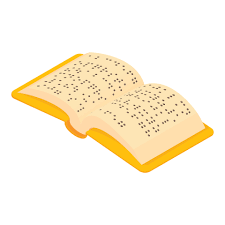Worksheet: Sharing Our Feelings - 2 | EVS for Class 3 PDF Download
Q1: Multiple Choice Questions (MCQs).
(i) What is the relationship between Seema and Ravi?
(a) Cousins
(b) Friends
(c) Siblings
(d) Classmates
(ii) What is Ravi's profession?
(a) Doctor
(b) Engineer
(c) Teacher
(d) Lawyer
(iii) What does Ravi use to help him navigate when he goes out?
(a) A white stick
(b) A guide dog
(c) A wheelchair
(d) A pair of glasses
(iv) Who does Seema share her feelings with after returning from school?
(a) Her father and brother
(b) Her grandmother and her brother
(c) Her friends
(d) Her teachers
(v) What is the special way of reading and writing used by people who are unable to see?
(a) Cursive script
(b) Braille script
(c) Handwriting
(d) Print script
Q2: Fill in the Blanks.
(i) How does Ravi read his books? He reads books with raised ______.
(ii) Who invented the Braille script? The Braille script was invented by Louis ______.
(iii) What is Seema's grandmother unable to do properly? Seema's grandmother cannot see or ______ properly.
(iv) Braille script is a special way of reading handwriting used by people who are unable to ________.
(v) Louis Braille, who belonged to ________, is known as the father of Braille.
Q3: True or False.
(i) Ravi's students help him with his lessons by taking notes for him.
(ii) "Differently able" is the term used to describe people who are physically challenged.
(iii) Seema was selected for the cricket team.
(iv) Seema shares her feelings with her Nani and her brother after returning from school.
(v) Seema's Nani can see and hear properly.
Q4: Answer the following Questions.
(i) What kind of problems do people have in old age?
(ii) Have you ever needed a stick? When?
(iii) Seema’s father reads the newspaper aloud to her Nani. How do you help old people?
(iv) How does Ravi bhaiya come to know so many things without seeing them?
(v) Can you think about when you may need a stick?
(vi) How many children could recognize the other children by only hearing them?
(vii) How many children could recognize the others by touching?
You can access the solutions to this worksheet here.
|
62 videos|182 docs|48 tests
|
FAQs on Worksheet: Sharing Our Feelings - 2 - EVS for Class 3
| 1. How can I effectively share my feelings? |  |
| 2. What are some benefits of sharing our feelings? |  |
| 3. How can I encourage others to share their feelings with me? |  |
| 4. What should I do if someone shares their feelings with me? |  |
| 5. Are there any alternatives to verbal communication for sharing our feelings? |  |






















